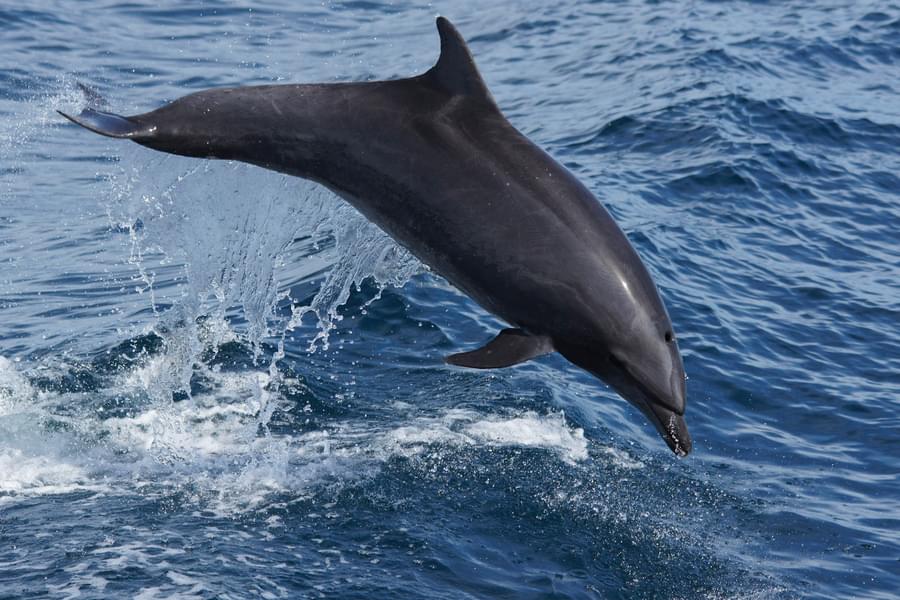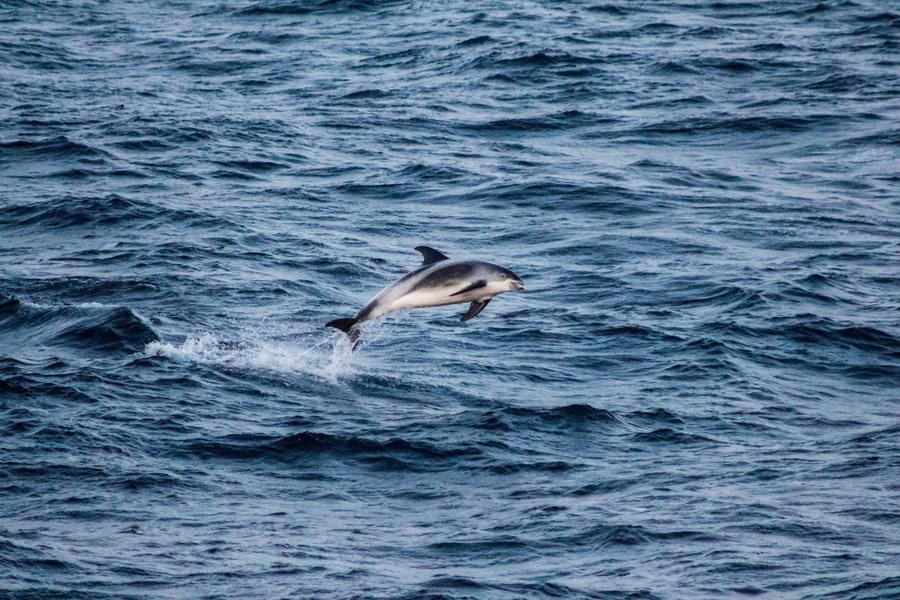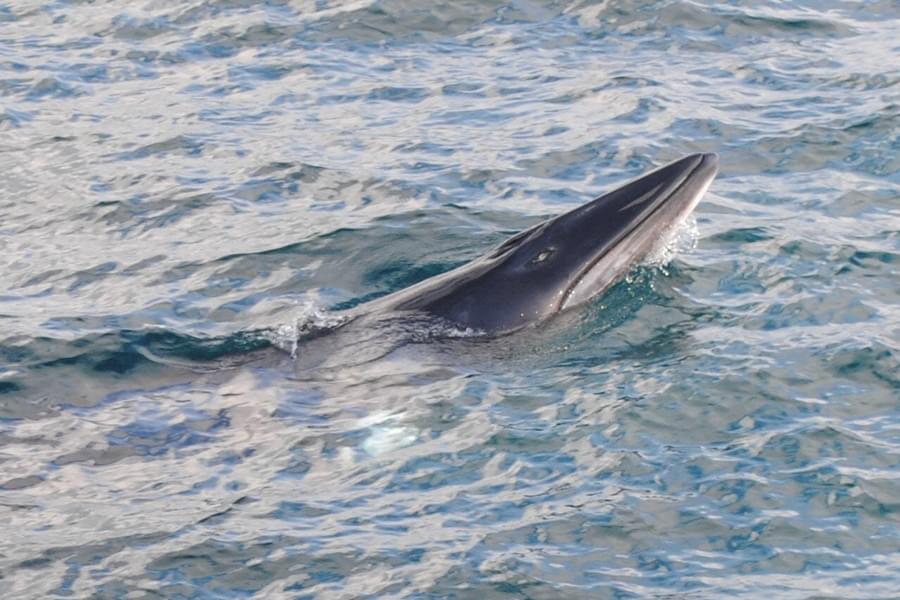Hello everyone, Ocean Conservationist Eilidh here to tell you about the animals that call the North Sea home. It is the end of my first week based on the DFDS King Seaways, and it has been really exciting to contribute to this long-running partnership. As Mathilde mentioned in our first North Sea blog, there is a lot of offshore development taking place near where we sail, and it has been interesting to see the work taking place. We travel past the new wind farm on each crossing, allowing us to collect data which will help determine if these developments are impacting the local wildlife.
Now, let me tell you which cetacean species we are most likely to see when crossing the North Sea, and how we can (hopefully) spot them:
Our smallest and most frequently sighted cetacean species on this ferry route is the harbour porpoise (Phocoena phocoena); we tend to see these shy animals alone or in small groups of two to four. Their small size and speedy surfacing makes them quite difficult to spot when the wind increases or there is some swell, so we really have to keep a vigilant watch to see them! Usually, when we spot a harbour porpoise, we only see a glimpse of their back and their small, triangular dorsal fin. At the time of writing this blog, we have already seen 22 harbour porpoises this season, however, we have not seen any on the Dutch side of the North Sea. Hopefully, this changes as the season continues.
Our two most commonly seen dolphin species on the crossing from North Shields to Ijmuiden are the bottlenose dolphin (Tursiops truncatus) and the white-beaked dolphin (Lagenorhynchus albirostris). Both of these species are more often sighted on the UK side of the North Sea. They behave quite similarly, often bow-riding and leaping out of the water; thankfully, they have physical differences which help us tell them apart!

The bottlenose dolphins here in the North Sea are some of the largest in the world, growing up to four metres long. Their large size and thick layer of blubber helps keep them warm in the cold water. They have a medium to dark grey back, with their curved dorsal fin in the middle, fading to a lighter grey or white on their underbelly. Their beak, or nose, is longer than one belonging to a white-beaked dolphin, with a characteristic bottle shape (hence the name).

White-beaked dolphins have a short beak that is usually white (again, the clue is in the name!), however, there is some variation, and some individuals are more like “mottled-beaked dolphins”. We can also distinguish them by their tall, dark dorsal fin in comparison to their stocky body, which is around two to three metres long. They have white blazes along their body and behind their dorsal fin, which contrasts with their dark grey back, again helping us determine which species we are seeing!
And later on in the summer, we are more likely to see minke whales (Balaenoptera acutorostrata). They are the largest cetacean species we commonly see in the North Sea, reaching approximately seven to ten metres in length, and are also our most common baleen whale species. Usually, they are seen alone or perhaps as a pair; though if there is a lot of food around, they can form larger feeding aggregations. Minke whales have white “armbands” on their pectoral fins, which researchers believe confuses their prey into a tighter school, allowing the whales to gulp up more fish.

If we do not see any cetaceans during the crossing, we might still spot the two seal species that live in the North Sea:
We are more likely to see grey seals (Halichoerus grypus) on the British side of the North Sea, as they have some significant haul-out sites along the East coast of the UK. You might have seen them fighting during one of the recent episodes of the BBC’s “Wild Isles”! These are the larger seal species, reaching up to two and a half metres long, and they have a more sloping, almost horse-like head. This is the best way to distinguish them from common seals.
Common, or harbour, seals (Phoca vitulina) are found in many areas around the world, however, we have been spotting them quite frequently around the Forteiland (fortified island) within the Port of Ijmuiden. Their faces have a puppy-like appearance, and they are overall smaller than grey seals. When out of the water, sometimes they strike a “banana pose”: this is when they lift their tail and head at the same time. It is believed they do this to keep warm, by stopping their flippers from getting wet!
I hope you’ve learned a little bit more about our most commonly seen mammals here in the North Sea. If you get the chance to come aboard the DFDS King Seaways, please join me out on deck where we can hopefully collect data on their presence and behaviour together.
Ocean Conservationist Eilidh

.jpg?w=900&h=600&q=85&auto=format&fit=crop&dm=1684759557&s=e25244b0e9f087e4f4cdb4e5949c302a)